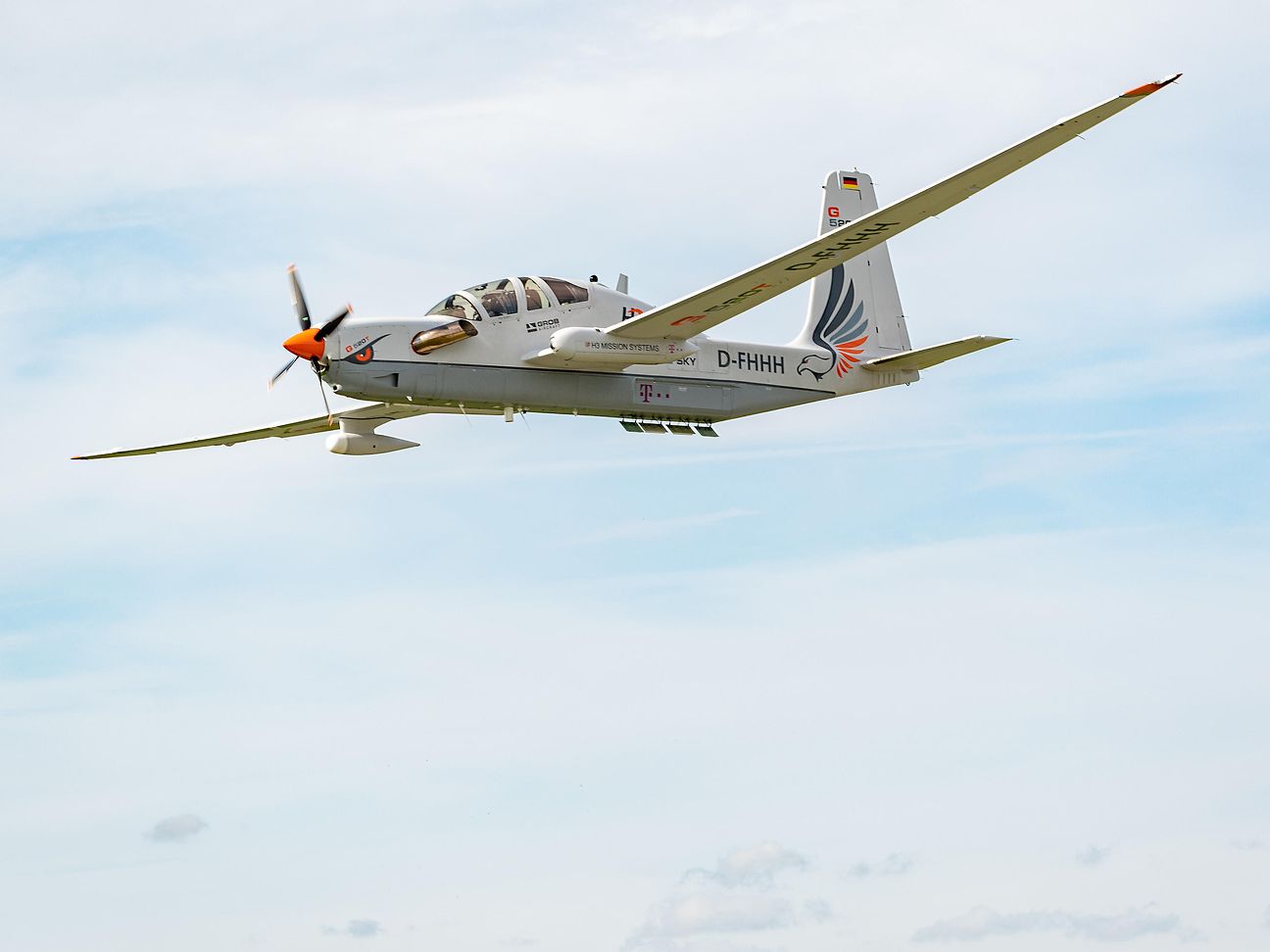

GSMA and Deutsche Telekom publish whitepaper for High Altitude Platform Systems (HAPS)
- HAPS will complement terrestrial networks for advanced connectivity
- Use cases: white spots, disaster recovery, temporary events, IoT
- Collaboration and partnership are crucial for the HAPS development
GSMA together with Deutsche Telekom and further mobile network operators published a white paper to promote the use of High Altitude Platform Systems (HAPS) technology to meet the need for broadband connectivity worldwide. HAPS are unmanned aircrafts that fly at altitudes of about 20 km.
A long-standing objective for mobile operators worldwide, the universal cellular coverage, would reduce the digital divide. The challenge is how to do this economically. Many regions without service have either very low population density, are difficult to reach with terrestrial-based radio systems, or both. Operating in the stratosphere, HAPS could bring connectivity to those areas.
Air-based mobile coverage solutions may also improve the resilience of cellular connectivity during natural disasters or other major disruptions to land-based networks. Further use cases include providing connectivity for the Internet of Things (IoT), temporary coverage for events, fixed wireless access and backhaul for terrestrial sites.
In general, HAPS could be high-altitude free-floating balloons, airships, or powered fixed-wing aircraft that use either solar power or an on-board energy source. All systems are designed to be airborne for long periods of time. Much closer to the earth than a satellite, a HAPS platform can project smaller beams onto the ground from a directional antenna, increasing the capacity delivered per unit area. In terms of spectrum, HAPS can employ licensed bands in low frequencies (below 6 GHz) to communicate directly with standard mobile devices, taking advantage of their relatively low altitude.
The whitepaper aims to create a common understanding between MNOs, build a basis for regulatory work and standardization as well as activate further industry partners to accelerate HAPS development. Therefore, GSMA continues the successful cooperation model that already got technologies such as 5G off the ground, by joining forces of partners which are interested in the development of HAPS. Besides Deutsche Telekom, which operated the world’s first HAPS data call integrated into a commercial mobile network in October 2020, Orange, Telefónica and Vodafone contributed to the whitepaper. Other signing partners are British Telecom, NTT DoCoMo and TIM.
The evolution of both mobile networks and unmanned aircraft are bringing new opportunities to explore further innovation in Connecting Everyone and Everything in line with GSMA vision. The whitepaper is exploring HAPS, their potential and the further innovation needed. It is important that the telco community works together to find the best technical and sustainable solution and the GSMA is happy to help driving the discussion,” says Alex Sinclair, CTO GSMA.
“In a globalized world, network innovations have to be evolved based on global collaboration and common standards. The whitepaper is the foundation for further HAPS development, and we are happy to contribute to this technology. HAPS enables network operators to provide connectivity everywhere at any time,” says Bruno Jacobfeuerborn, responsible for the HAPS project at Deutsche Telekom.
The whitepaper can be downloaded here.
About Deutsche Telekom: Deutsche Telekom at a glance



